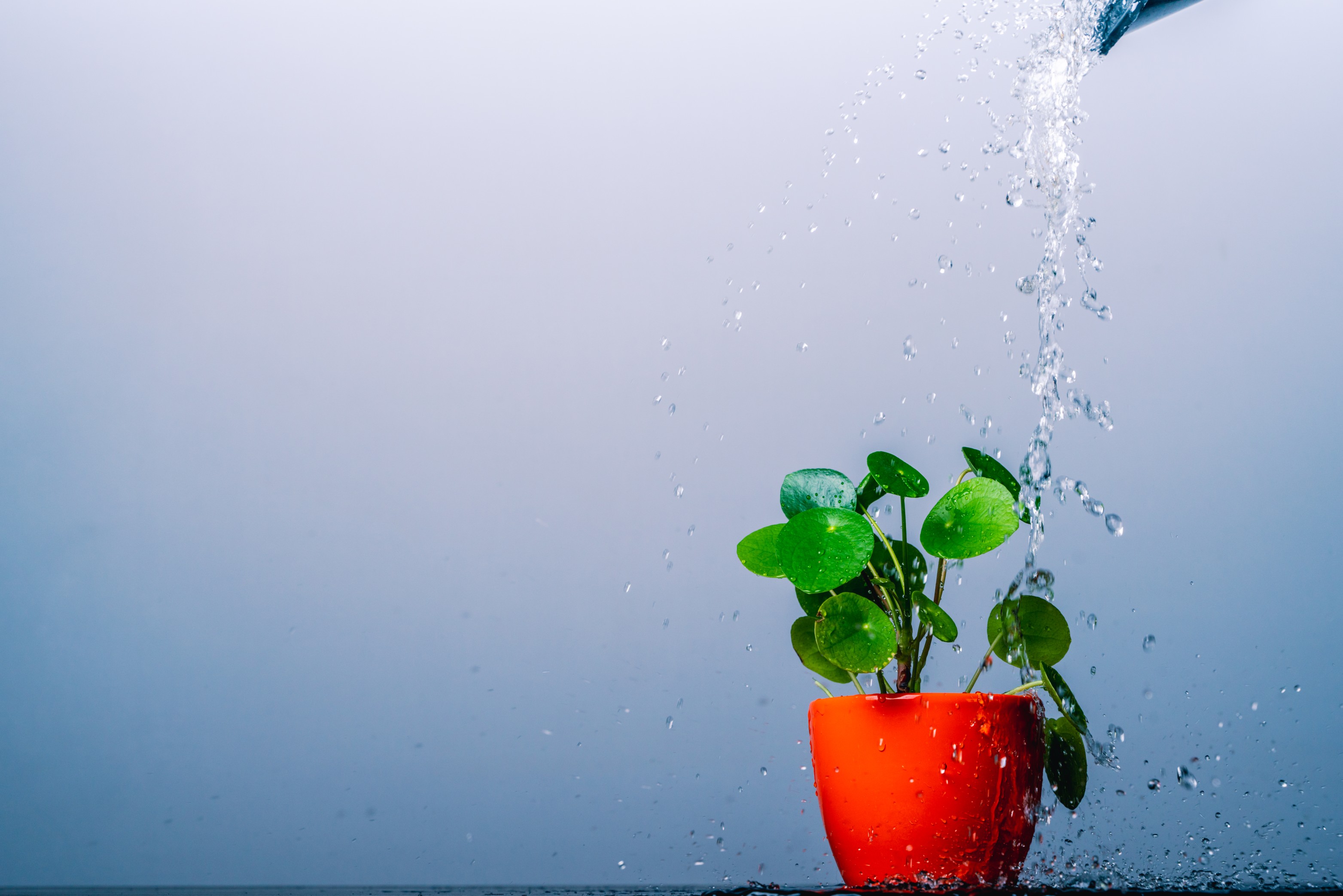How Smart Irrigation Helps AgriTech Leaders Eliminate Overwatering and Save Resources

Water is the lifeblood of agriculture, yet it remains one of the most mismanaged resources on farms worldwide. As farmers grapple with water scarcity, rising irrigation costs, and unpredictable climate patterns, overwatering has emerged as a silent yet costly challenge.
Overwatering doesn’t just waste water—it harms crops by depriving roots of oxygen, leaches nutrients from the soil, and inflates operational costs. A recent study found that farms lose up to 30% of water due to inefficient irrigation practices.
But there’s hope: Smart irrigation systems powered by artificial intelligence (AI), IoT sensors, and data analytics are revolutionizing water management, ensuring crops receive just the right amount of water at the right time.
This blog dives deep into how farmers can eliminate overwatering, save money, and boost sustainability through smart irrigation solutions.
Overwatering may seem like a small oversight, but its consequences are far-reaching:
Wasted Resources: Excess irrigation not only wastes water but also consumes electricity, fuel, and labor.
Crop Damage: Waterlogged soil can suffocate roots, promote diseases like root rot, and stunt crop growth, leading to reduced yields.
Nutrient Loss: Overwatering washes away vital nutrients, forcing farmers to apply more fertilizers and increasing costs.
Environmental Impact: Excessive water use depletes groundwater reserves, contaminates waterways, and worsens water scarcity in drought-prone regions.
For example, Maria, a tomato farmer in California, used conventional flood irrigation. Despite watering her fields regularly, crop health declined due to over-irrigation. Not only did she lose 10% of her yield, but her water bills skyrocketed.
Takeaway: Overwatering harms your bottom line, your crops, and the environment. Smart irrigation solves these problems with precision.
The first step in eliminating overwatering is understanding when and how much water your soil needs.
How It Works: IoT-based soil moisture sensors measure water levels at various depths and send real-time data to an AI-powered platform.
Actionable Insights: Instead of guessing, farmers know precisely when to irrigate, ensuring no water is wasted.
For instance, a vineyard in Spain used CropX’s soil sensors to monitor moisture levels in different zones. The AI system recommended targeted irrigation schedules, reducing water usage by 25% without affecting grape yields.
Takeaway: Soil moisture sensors ensure water is applied only when the crops need it, eliminating guesswork.
Smart irrigation systems combine real-time weather forecasts with soil data to optimize water delivery.
Weather Adaptability: AI adjusts irrigation schedules based on rain forecasts, humidity levels, and evaporation rates.
Zone-Based Watering: Using data from drones or sensors, AI identifies areas of the field that need more water and avoids overwatering healthy zones.
For example, an Australian wheat farm implemented Netafim’s AI-powered drip irrigation system. By integrating real-time weather data, the system paused irrigation on days with expected rainfall. This precision saved the farm 30% of water annually and improved soil health.
Takeaway: AI ensures every drop of water counts, adapting to real-time weather conditions and crop needs.
Manual irrigation often leads to overwatering due to inconsistent scheduling and human error. Smart irrigation automates the entire process:
Automated Drip Systems: Water is delivered directly to the root zone through precise, programmable drip lines, preventing waste.
Smart Controllers: These controllers integrate sensor data and automatically trigger irrigation systems when moisture levels fall below the optimal range.
Alerts and Monitoring: Farmers receive real-time notifications and can adjust settings remotely using mobile apps.
For example, a rice farmer in India implemented HydroPoint’s WeatherTRAK system, which automated irrigation based on crop needs and weather forecasts. Water usage dropped by 20%, while yields increased due to healthier, oxygenated roots.
Takeaway: Automation removes human error, ensures consistency, and allows farmers to manage irrigation from anywhere.
Advanced tools like drones and satellite imagery provide a bird’s-eye view of crop health and water distribution:
Crop Stress Detection: Multispectral imaging identifies areas of crop stress caused by overwatering or underwatering.
Water Distribution Maps: AI analyzes images to generate water distribution maps, helping farmers adjust irrigation accordingly.
For instance, a cotton farm in Texas used Sentera drones to capture water stress data across its fields. The AI analysis pinpointed over-irrigated zones, allowing the farmer to make targeted adjustments and save 15% on water costs.
Takeaway: Drones and satellites detect overwatering early, enabling data-driven irrigation adjustments for maximum efficiency.
Smart irrigation platforms don’t just stop at saving water—they help farmers measure, analyze, and continuously improve their water efficiency.
Performance Dashboards: Platforms like Trimble Ag Software provide real-time analytics on water usage, efficiency rates, and savings.
Continuous Learning: AI learns from historical data to improve irrigation schedules season after season.
For instance, a corn farm in Nebraska used IrriWatch to measure its irrigation performance. The platform provided detailed reports that helped the farmer cut water usage by 18% while improving yield consistency.
Takeaway: Continuous monitoring and data-driven improvements help farmers sustain long-term water efficiency.
Smart irrigation is more than just a tool—it’s the future of sustainable agriculture. As water scarcity becomes a global challenge, farmers adopting precision irrigation are leading the way in resource conservation and profitability.
By combining AI, IoT, and automation, farmers can:
Reduce water usage by up to 30%
Lower input costs (electricity, labor, fertilizers)
Prevent crop damage caused by overwatering
Boost yields through healthier, oxygenated soil
Platforms like AiDOOS simplify the adoption of smart irrigation solutions, providing farmers with access to cutting-edge technology without the need for significant upfront investments. With AiDOOS’ plug-and-play model, even small farms can implement precision irrigation tools that save water, reduce costs, and boost productivity.
The era of guesswork in irrigation is over. By adopting smart irrigation systems powered by AI, sensors, and automation, farmers can eliminate overwatering, conserve precious water resources, and increase their profitability.
Water is no longer a resource we can afford to waste. With smart irrigation, every drop truly matters.
Smart irrigation systems are reshaping modern agriculture by addressing the pressing issues of water management and resource conservation. AiDOOS’ Virtual Delivery Center (VDC) model offers agricultural leaders the tools and expertise to optimize irrigation systems and integrate smart technologies. Here's how VDCs play a pivotal role:
On-Demand Agricultural Expertise
VDCs connect you with irrigation specialists, data scientists, and environmental engineers who can design, implement, and monitor smart irrigation solutions tailored to specific crop and soil needs.
Seamless IoT Integration
Leveraging IoT sensors and automation tools, VDCs enable real-time soil moisture monitoring, weather forecasting, and precise water delivery systems. This minimizes water wastage and prevents overwatering, improving crop yield and health.
AI-Powered Insights
By utilizing AI and predictive analytics, VDCs help agricultural leaders analyze irrigation patterns and optimize water usage. This ensures resources are directed to areas that need them most, reducing costs and conserving water.
Sustainability at Scale
Smart irrigation systems supported by VDCs align with sustainability goals by reducing environmental impact. The ability to monitor and control water distribution enhances long-term soil health and supports eco-friendly farming practices.
Cost-Effective Deployment
Implementing smart irrigation technology can be expensive and time-consuming. VDCs offer scalable teams that can rapidly deploy and maintain these systems, ensuring quick ROI and minimal disruptions to farming operations.
Centralized Data Management
With the VDC model, agricultural leaders gain access to centralized platforms for data collection and analysis. These platforms provide actionable insights, helping farmers make informed decisions about irrigation schedules and water allocation.
Empowering Agriculture Through Smart Solutions
Smart irrigation, powered by the VDC model, is transforming agriculture by eliminating inefficiencies in water usage. By partnering with AiDOOS, agricultural leaders can adopt cutting-edge technologies and sustainable practices, ensuring enhanced productivity, reduced costs, and a better future for farming.

By redesigning packaging, exploring reusable models, investing in smart tracking, and leveraging the VDC model for execution, beverage manufacturers can reduce their environmental footprint while boosting their brand relevance and operational resilience.

Even the most capable in-house IT teams often fall short when it comes to minimizing downtime. While Managed Services solve much of the downtime problem, the VDC model supercharges it with flexibility, scalability, and domain-specific expertise.